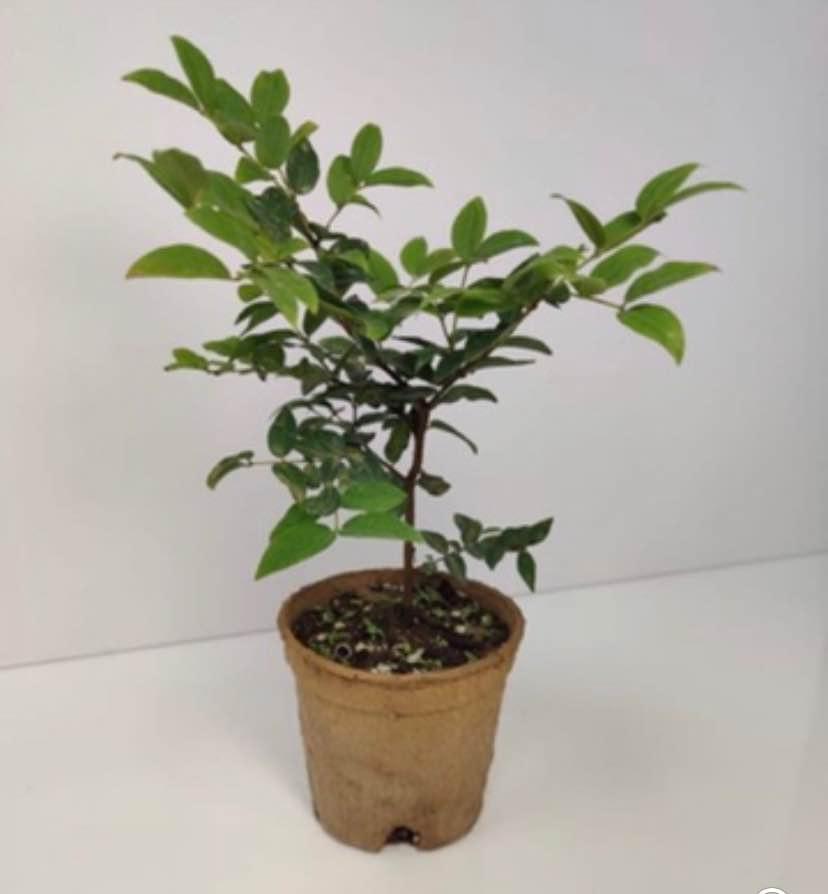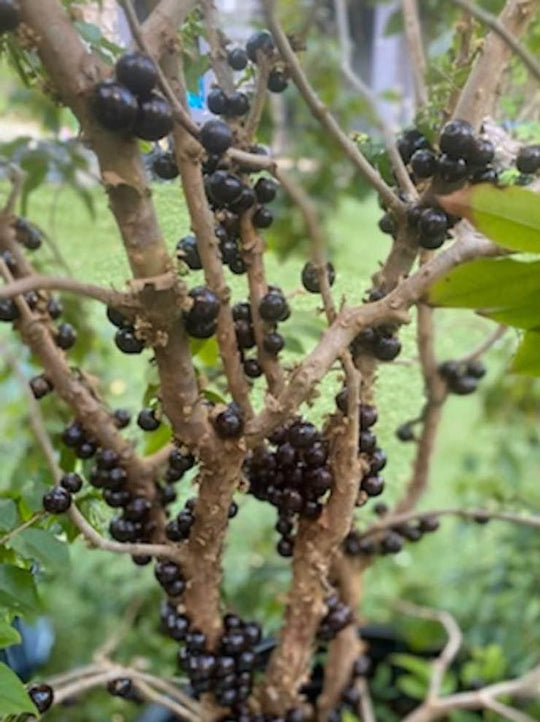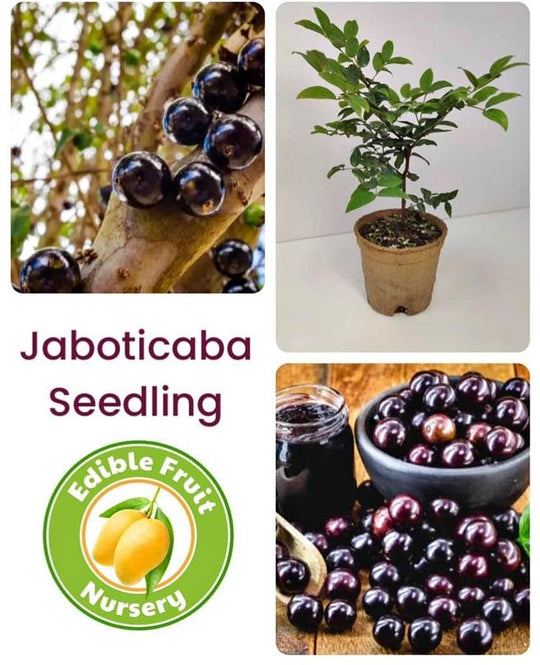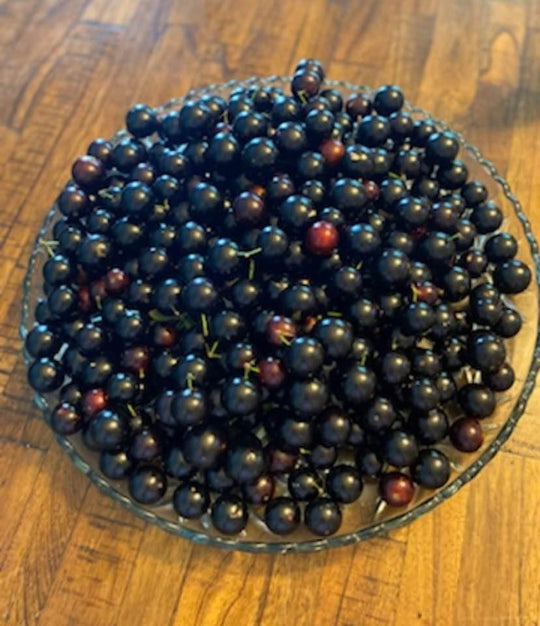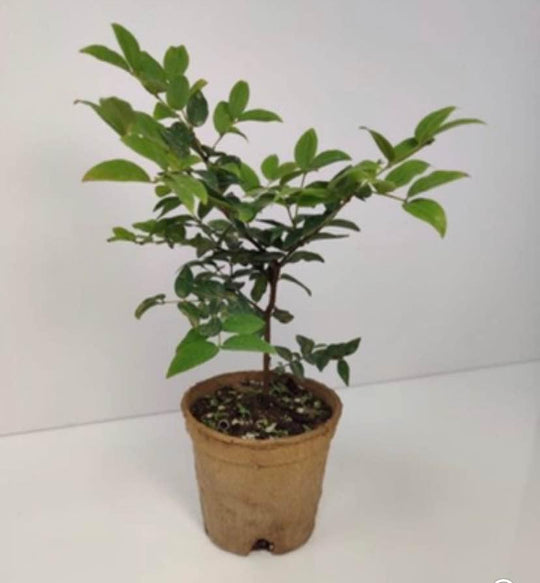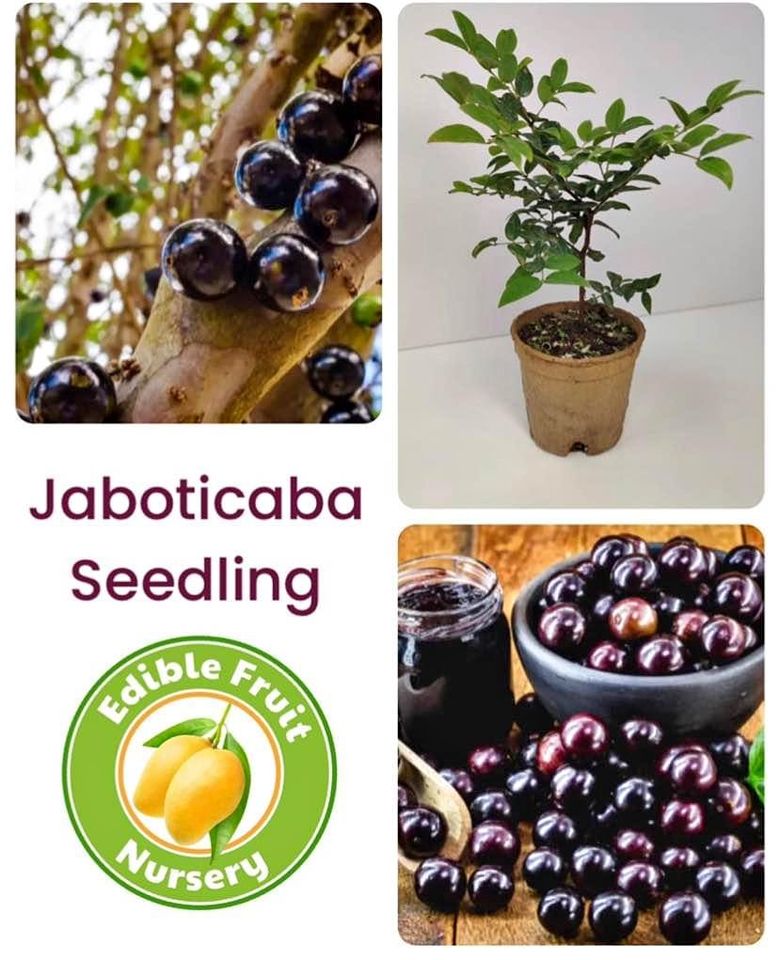Jaboticaba Brazilian Grape Plinia Cauliflora Live Fruit Tree Great for Bonsai
Jaboticaba, scientifically known as Plinia cauliflora, is a unique and delicious tropical fruit native to Brazil.
This Brazilian Grape (not grapevine) is a small to medium-sized evergreen tree that typically reaches a height of 10 to 15 feet (3 to 4.5 meters). It features a dense, compact canopy with glossy dark green leaves that provide an attractive backdrop for its fruits. The most distinctive feature of the Jaboticaba tree is its trunk and branches, which produce fruits directly along their bark, giving it a fascinating appearance.
Growth Habit:
Jaboticaba trees prefer tropical to subtropical climates and thrive in regions with consistent rainfall and temperatures between 60-85°F (15-29°C). They are well-suited to humid conditions and can be grown in both full sun and partial shade. The tree has a slow to moderate growth rate and can take several years to start bearing fruit, with full production typically achieved after around 8 to 10 years.
The Jaboticaba tree produces white, star-shaped flowers that emerge from small buds along the trunk and branches. These flowers eventually give way to the fruit, which resembles large purple or dark purple berries. The fruits grow in clusters and have a smooth, thin skin with a sweet and juicy translucent pulp. They are typically consumed fresh and have a flavor that ranges from sweet to slightly acidic, reminiscent of grapes.
Uses:
• Fresh Consumption: The most common and enjoyable use of Jaboticaba is eating the fresh fruits straight from the tree. The sweet and tangy flavor makes them a delightful snack or a refreshing addition to fruit salads.
• Culinary Applications: Jaboticaba fruits can be used in various culinary preparations. They can be turned into jellies, jams, and preserves, or used as a flavoring for desserts, cakes, and ice creams. The pulp can also be used to make juices and wines, often mixed with sugar or other fruits.
• Medicinal Uses: In traditional medicine, various parts of the Jaboticaba tree, including the bark and leaves, are used for their potential medicinal properties. They are believed to have antioxidant, anti-inflammatory, and antimicrobial effects, although scientific research is limited in this regard.
• Ornamental Plant: Due to its unique growth habit and attractive foliage, Jaboticaba is also cultivated as an ornamental tree in gardens and landscapes. It can be pruned to maintain a compact size or grown as a bonsai tree, showcasing its intriguing trunk and fruiting habit.
Jaboticaba is a delightful fruit tree with an eye-catching growth habit and delicious fruits. Whether enjoyed fresh, used in culinary creations, or appreciated for its ornamental value, Jaboticaba adds beauty and flavor to tropical and subtropical landscapes
SORRY…NO SHIPPING TO CALIFORNIA





